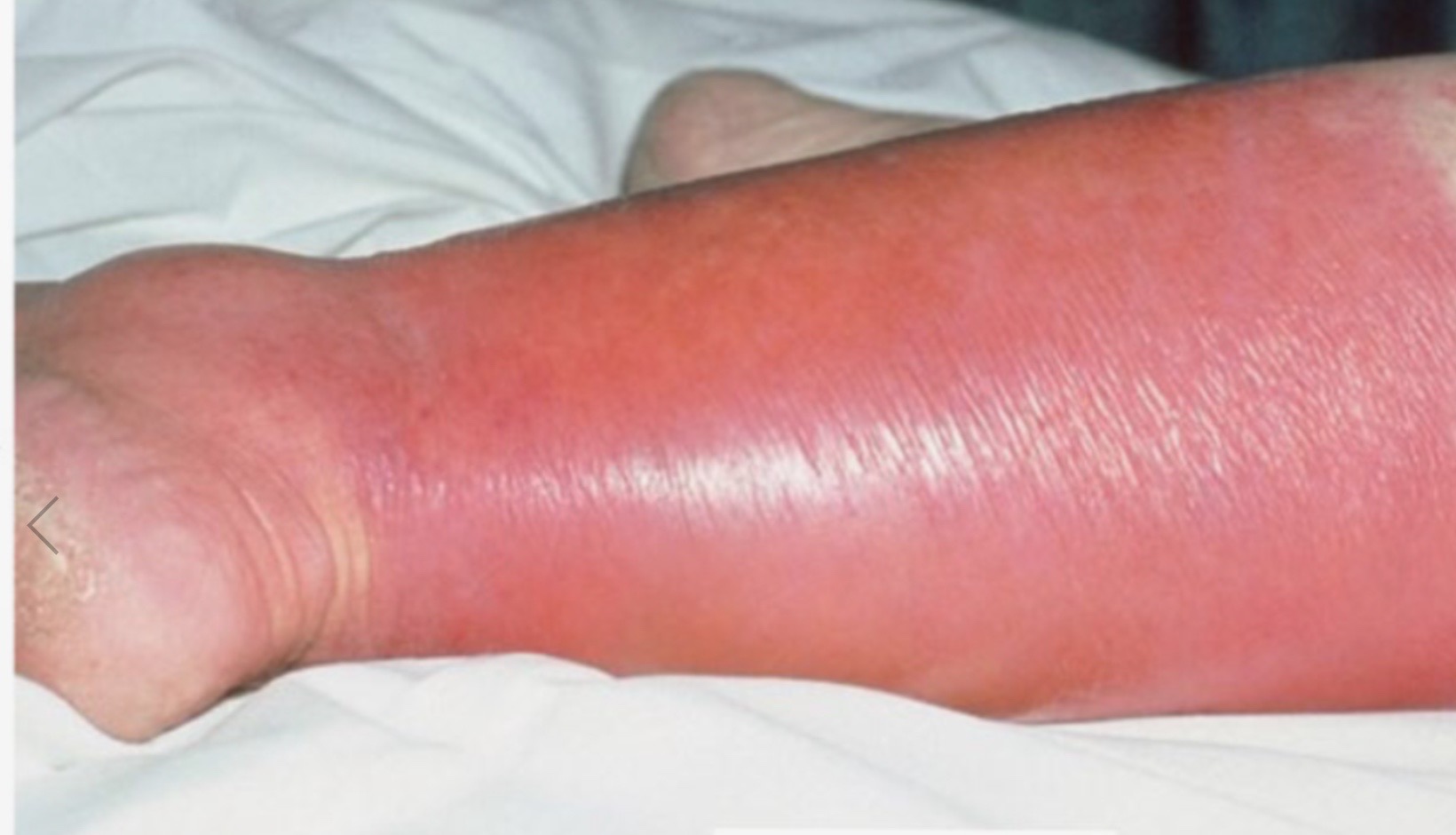
Understanding Cellulitis: Causes, Treatments, and Prevention
What is Cellulitis?
Cellulitis is a common but potentially serious bacterial skin infection. The skin affected is typically red, swollen, and painful, and it may feel warm to the touch. Unlike a similar-sounding condition, cellulite — a harmless "dimpling" effect under the skin — cellulitis comprises a serious health condition that requires medical attention.
Causes of Cellulitis
Cellulitis occurs when bacteria, most commonly group A Streptococcus or Staphylococcus, enter through a break in the skin. This may follow situations such as cuts, insect bites, ulcers, or surgery. Certain factors increase susceptibility:
- Weak immune system: Conditions like diabetes, chronic lymphatic issues, or use of immunosuppressive drugs.
- Skin conditions: Conditions such as eczema or athlete’s foot can create open wounds, facilitating bacterial entry.
- Chronic swelling: Lymphedema may also contribute to skin vulnerability.
For further explanation on bacterial causes, visit the Centers for Disease Control and Prevention (CDC) website.
Symptoms and Diagnosis
Recognizing Symptoms
Common symptoms emerge quickly over a couple of days and may include:
- Red, inflamed skin that may spread quickly
- Swelling
- Pain or tenderness in the affected area
- Heat in the affected area
- Fever or chills
If you notice any of these symptoms, seek prompt medical help. Diagnosing cellulitis early can prevent the infection from worsening or spreading.
How is Cellulitis Diagnosed?
Healthcare professionals will conduct a thorough physical examination by inspecting the affected skin area. They may also examine associated symptoms to rule out similar conditions, such as venous insufficiency, or necrotizing fasciitis.
In certain cases, blood cultures or wound cultures might be necessary to identify the specific bacteria involved.
Management and Treatment
Treating cellulitis effectively requires antibiotics. The type of treatment often depends on the severity of the infection and its location on the body.
Antibiotic Treatments
- Oral Antibiotics: For less severe cases, oral antibiotics like Cephalexin (Keflex®), Amoxicillin, or Clindamycin are commonly prescribed.
- Intravenous Antibiotics: Severe cases, or those that do not resolve with oral medications, may need hospital treatment with intravenous antibiotics.
Consult the following resource for a detailed list of antibiotic options: MedlinePlus - Cellulitis Treatment.
Home and Supportive Care
- Resting: Elevate the affected area to reduce swelling.
- Pain Management: Use pain relief like ibuprofen or acetaminophen for discomfort.
- Wound Care: Keep wounds clean and covered until healed.
Stay hydrated and maintain nutritious intake to support overall recovery.
Non-Clinical Concerns
While cellulitis can be successfully treated, it can sometimes lead to complications if not properly addressed. Chronic or recurrent instances of cellulitis can damage the lymphatic system and lead to persistent swelling or tissue loss.
Prevention
Preventing cellulitis involves measures to protect the skin and maintain overall skin health:
- Good Wound Care: Clean cuts and abrasions promptly and thoroughly. Cover them with sterile bandages to protect from infection.
- Skin Hydration: Use lotion or moisturizers to prevent cracking, especially for those with dry, sensitive skin.
- Protective Clothing: Wear long sleeves, pants, or insect repellent when in nature to prevent bites and stings.
- Check for Signs: Be vigilant for any small injuries or abrasions, especially if you have conditions that make skin more vulnerable, like diabetes.
For more in-depth prevention strategies, see American Academy of Dermatology (AAD) guidelines.
Living With Cellulitis
Stay in close contact with healthcare providers throughout the course of treatment. Full adherence to prescribed antibiotics is essential even after visible symptoms resolve, to prevent a recurrence.
When to Seek Medical Attention
Call your healthcare provider if:
- Symptoms persist or worsen after a few days of antibiotics
- You develop fever or chills
- New symptoms like pus, pain, or rapid spreading of redness occur
Questions to Discuss with Your Doctor
- What home care practices should I follow while on antibiotics?
- Is there any specific activity I should limit during recovery?
- Are there any long-term implications I should be aware of?
- What steps should I take to prevent cellulitis in the future?
For more information about living with cellulitis, you can visit the Mayo Clinic's Cellulitis Guide.
By being prepared and informed, you can mitigate risks and respond proactively to cellulitis, thus ensuring a swift recovery and reducing the chances of recurrence.

Identify Skin Conditions Instantly
Try Rash ID for Free